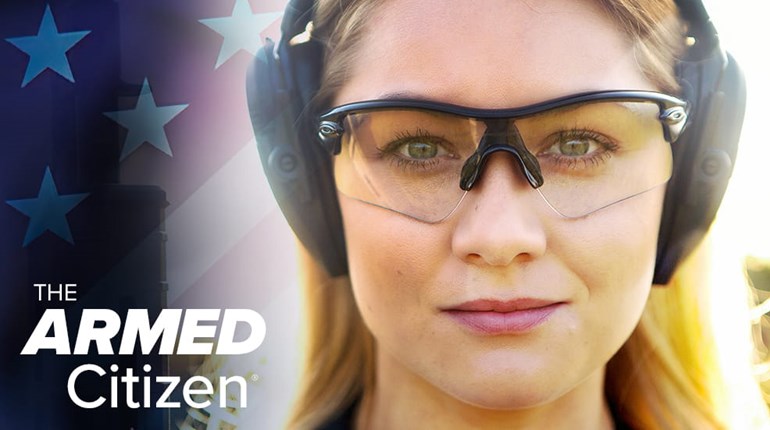
Soldiers clearing a building may need pinpoint accuracy if friendlies or non-combatants are present, but at such distances, even a 3-MOA gun will provide roughly half-inch groups. In all but the rarest of scenarios, that is more than enough accuracy for soldiers and civilians alike. Photo: U.S. Army
Accuracy is important to me, especially when it comes to rifle shooting. While I don’t get upset about a distant group that “opens up” by a tenth of an inch, I always appreciate the value of well-tuned and honed tools. The way I see it, the better the mechanical parts of the system—rifle, ammunition, optic—the greater the margin of error that the living, breathing, thinking part has to work within. In spite of our efforts to eliminate human mistakes, they happen often enough that paring down other variables makes for good insurance. Considering the high quality of today’s rifle-system components, there is little excuse for a modern longarm to shoot poorly right out of the box. Having said all that, I firmly believe that hyper-focusing on the accuracy potential of a rifle that will most likely be used inside of the home for defensive purposes is not the best way to concentrate your efforts.
Before the accuracy purists’ arrows rain down on me, I should explain my frame of reference. Most of my Army career was spent as a counter-terrorist operator. At the core of that vocation is the need to maintain a standard of firearms proficiency and precision-shooting ability that is off-the-charts high. The reason for this is simple: There is no room for mistakes when you must discriminate between threats and non-threats in milliseconds, and then apply deadly force more effectively than your opponents. The price for inaccuracy during training is retraining or reassignment, but in combat, it gets good people killed.
In such a profession, one must be capable of consistently hitting exact points-of-aim in all sorts of crazy circumstances. Blacked-out conditions are the norm. Strong- and weak-hand shooting are required due to the complexities of working in confined spaces or while wounded. Throw in a steady stream of explosive breaching charges, terrified and often screaming non-combatants and an IED for good measure, and you start to get the picture. A further complication is that the people shooting back routinely use innocent civilians and even children as human shields. That sort of evil requires perfectly placed shots. I fully understand the need for and application of close-range accuracy.
I also know that while good tools matter, how they are wielded matters more. My teammates and I did live CQB with various handguns, heavily customized carbines, much larger sniper rifles and even World War II-era submachine guns. Dynamic situations often dictate the available tools. Home defense also requires flexibility, because we do not typically have any warning before a violent attack starts.
Right off the bat, we can expect to be working in low light. Proper gun setup and training to shoot in darkness are critically important preparations, especially when there is a need to discriminate between violent intruders and family members in a residence. The right ammunition—expanding, limited penetration, properly functioning—also has to be in play.
Distance considerations figure squarely into this picture. The average dwelling does not present particularly long indoor shots. In most cases, the greatest span is either across an open ground floor or down a central hallway. Thirty feet is probably a fair average, and unless you’re a politician with multiple palaces, finding a shot much beyond 40 feet is an indoor rarity.
Even if you have a longer span to cover, simple math provides some context for acceptable indoor accuracy. For example, the oft- referenced minute of angle (MOA) equals 1.0472 inches at 100 yards. At 50 feet, 1 MOA is just .17 inches. Therefore, even if you have a rack-grade 2-MOA or (gasp) 3-MOA gun, your potential “group” capability at this longer-than-normal distance is going to be .34 to .51 inch, respectively. Unless your house is being swarmed by armed micro drones, there’s a pretty solid chance that a half-inch variance in shot placement is going to get the job done.
It is important to remember that unless you zero for very close ranges, your line of sight (through optics or irons) will be higher than the line of bore when shooting up close. That means it will probably take more distance than you have indoors for your projectile to cross through your line of sight when using a typical zero. Therefore, should you be presented with a tough shot—such as a partial threat target exposure around protective cover—you’ll need to know where to hold in order to make an effective hit. The best way to figure that out is to spend time shooting at various close distances on the range.
In spite of my tendency to look at rifle shooting through a sniper’s eyes, I know that home defense doesn’t require a sniper rifle. Whether it shoots half-inch or 3-inch groups at 100 yards, so long as it functions reliably, it is capable of doing the job for home defense if I do mine. Keeping things simple, practicing regularly and staying flexible are far more important than having an indoor tack-driver. Once you are confident that your rifle functions properly and your critical skills are at or above par, you can work on shaving .1 MOA off your defensive arm’s accuracy. That will be important if you ever have cause to step outside with rifle in hand. But that’s a topic for another day.





































